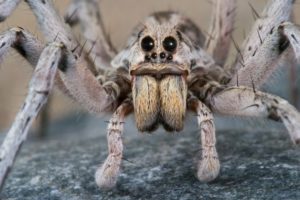 It was shortly after dark when Randall made his way through the dry September grass to pour out some hamburger grease near the edge of the woods. He wore a caving light strapped to his forehead. When you live way out in the country, you never know what you might bump into at night, especially if you’ve been grilling burgers.
It was shortly after dark when Randall made his way through the dry September grass to pour out some hamburger grease near the edge of the woods. He wore a caving light strapped to his forehead. When you live way out in the country, you never know what you might bump into at night, especially if you’ve been grilling burgers.
As he bent over to pour the cooled grease onto the ground, something eerie caught his eye. Hundreds of tiny lights were shining in the grass. What could they be? It was too far into the fall for lightning bugs. Could it be foxfire, that mysterious luminescent glow produced when a certain type of fungi comes in contact with rotting wood? He bent down to take a closer look.
What he saw were spiders. Wolf spiders. Too many wolf spiders to count.
He rushed back to the house to tell his wife, Dana, what he’d seen. Then Dana, who is my hairdresser, told me. Of course, I wanted to know more. “It’s eyeshine,” she said. “The same thing you see when you shine a flashlight at a dog or cat at night. But to make it work with spiders, you have to hold the flashlight at eye level instead of at your waist.” Randall’s headlamp had been at exactly the right height and angle to spot the spiders.
I knew I had to see this astonishing phenomenon for myself. But first I needed to do a little research. I learned that eyeshine isn’t a glow. It’s a reflection caused when light enters an animal’s eye, passes through the retina, strikes a reflective membrane and bounces back. Eyeshine is common among mammals that are nocturnal hunters and foragers, including possums, raccoons, coyotes, foxes and bears. Reptiles such as bullfrogs and alligators have eyeshine, too. Humans do not.
Wolf spiders have eight eyes in three rows on their face. The bottom row has four small eyes. The top row had two medium-sized eyes. It’s the two large, prominent eyes in the middle row that give the spiders their spooky green glow when a light is shined on them.
Wolf spiders don’t build webs. Instead, like real wolves, they hunt and pounce upon their prey—mostly insects and other spiders—rather than trapping it. Once the unfortunate captive is in the clutches of its captor’s powerful legs, the wolf spider kills with a fatal bite. It’s impressive. And violent.
The good news is that wolf spiders are harmless to humans. Though they may bite if provoked, no serious medical problems have ever been reported from a wolf spider bite.
Armed with information, it was time scour my own yard to see how many wolf spiders I could spot. Because I don’t have a caving headlamp, I grabbed my trusty handheld flashlight and headed out into the night, holding the light at eye level and sweeping its beam over the grass. Right away, I saw a glow and hurried over to see how many spiders I’d found. Alas, it was only dewdrops on the grass. This happened again and again, and I soon grew discouraged.
But then, while walking beneath the giant pine tree in my front yard, I spotted a glow that definitely wasn’t dew in the thick bed of pine straw. It was eyeshine! Absolutely, positively, without a doubt, I’d found wolf spiders. Not thousands or hundreds or even dozens, but only three. And yet I felt as though I’d discovered a pot of gold.
I was even happier that I’d found the perfect subject for this week’s column. Though I’m crazy about ghosts and jack-o-lanterns and bats and black cats and witches on broomsticks, spiders—especially wolf spiders—are now and forever my favorite symbol of Halloween.
(October 27, 2019)